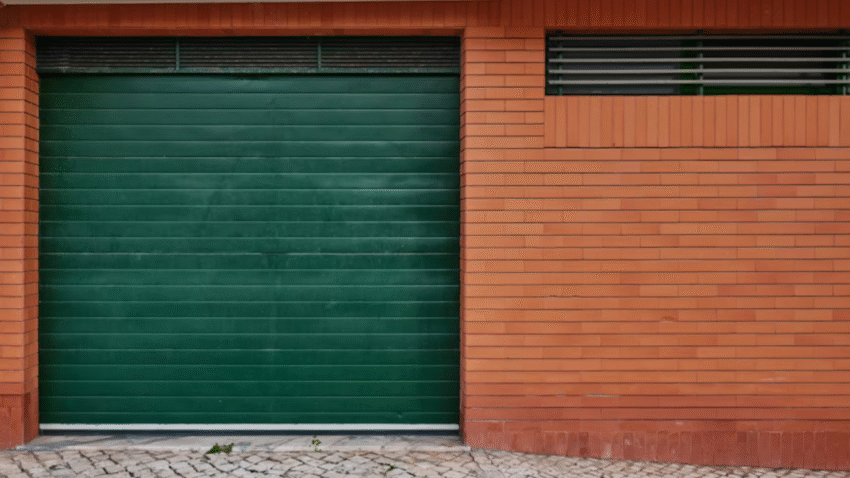Introduction
Rust is the silent enemy of every DIYer and homeowner. Leave your tools sitting in a damp garage, and that shiny metal surface will soon turn rough, flaky, and orange. Fortunately, learning how to remove rust from garage tools is a straightforward process that can bring even the most neglected tools back to life. With the right methods and a little elbow grease, you can restore performance, extend tool life, and save money on replacements.
Why Removing Rust Matters for Your Garage Tools
Rust isn’t just ugly—it’s destructive. When left untreated, it eats away at the metal, dulls cutting edges, and weakens tool structure. Removing rust offers several benefits:
- Restores performance – Sharpens cutting edges and improves grip.
- Extends lifespan – Prevents further corrosion and breakdown.
- Saves money – Keeps tools in service longer, reducing replacements.
- Improves safety – Rust can cause parts to seize or break unexpectedly.
- Enhances resale value – Well-maintained tools fetch higher prices if sold.
Keeping tools rust-free also makes your garage look more professional and organized.
Step-by-Step Guide to Removing Rust from Garage Tools
1. Assess the Rust Level
Before choosing a removal method, check the extent of the rust:
- Light surface rust – Thin orange coating, usually removable with mild abrasives.
- Moderate rust – More noticeable pitting; may require chemical treatment.
- Heavy rust – Deep corrosion and flaking; may need aggressive restoration or replacement.
2. Gather Your Supplies
Depending on your chosen method, you’ll need:
- Wire brush or steel wool.
- Sandpaper (medium to fine grit).
- White vinegar or citric acid.
- Baking soda.
- Rust remover gel or spray (optional).
- Old rags.
- Rubber gloves and safety goggles.
3. Clean the Tool First
Remove dirt, grease, and loose debris:
- Use soapy water and a rag to wipe down the tool.
- Dry thoroughly to prevent adding more rust during cleaning.
4. Choose a Rust Removal Method
Method 1: Manual Abrasion (Best for Light Rust)
- Use steel wool, a wire brush, or sandpaper to scrub away rust.
- Work in small circular motions for even removal.
- Wipe away debris with a clean cloth.
Method 2: Vinegar Soak (Best for Moderate Rust)
- Fill a container with white vinegar.
- Submerge the rusty tool (or rusty parts) for 12–24 hours.
- Remove and scrub with a wire brush or steel wool.
- Rinse with water and dry immediately.
Method 3: Baking Soda Paste (Eco-Friendly Option)
- Mix baking soda with water to form a thick paste.
- Apply to rusty areas and let sit for 1–2 hours.
- Scrub with a brush, rinse, and dry.
Method 4: Commercial Rust Removers (Best for Heavy Rust)
- Apply rust remover gel or spray according to instructions.
- Let it work for the recommended time.
- Scrub off loosened rust and rinse thoroughly.
5. Prevent Flash Rusting
Freshly cleaned metal is prone to immediate rusting if exposed to moisture:
- Wipe tools with a rag lightly coated in mineral oil or a rust-preventive spray.
- Store tools in a dry location, preferably in a toolbox or on a pegboard.
6. Sharpen and Restore Function
For cutting tools like chisels, scissors, or blades, use a sharpening stone or file after rust removal to restore their edge. Lubricate any moving parts such as hinges or joints.
Common Mistakes to Avoid
- Leaving tools wet after cleaning
- Mistake: Allowing moisture to sit on the metal surface.
- Solution: Always dry thoroughly after cleaning.
- Using overly harsh abrasives
- Mistake: Removing too much metal along with rust.
- Solution: Start with finer abrasives and move up only if needed.
- Ignoring safety precautions
- Mistake: Handling chemicals without gloves or eye protection.
- Solution: Wear proper safety gear when using rust removers.
- Not treating all rust spots
- Mistake: Cleaning only visible areas while hidden spots continue to corrode.
- Solution: Inspect tools carefully and treat all affected areas.
- Failing to protect tools after cleaning
- Mistake: Skipping protective oiling or coating.
- Solution: Apply a rust inhibitor after every cleaning session.
Extra Garage Tips & Hacks
- Use silica gel packs in tool drawers to absorb moisture.
- Hang tools on a pegboard to improve air circulation.
- DIY rust prevention spray: Mix 1 part motor oil with 3 parts mineral spirits and wipe lightly on tools.
- Related read: Check out our guide on storing power tools safely in your garage.
Conclusion
Removing rust from garage tools is a simple task that can save you money, extend tool life, and keep your garage looking organized and professional. Whether you choose manual abrasion, vinegar soaking, or a commercial rust remover, the key is to act quickly, clean thoroughly, and protect your tools afterward.
Pro Tip: Make rust removal part of your seasonal garage maintenance routine to keep your tools in peak condition year-round.
